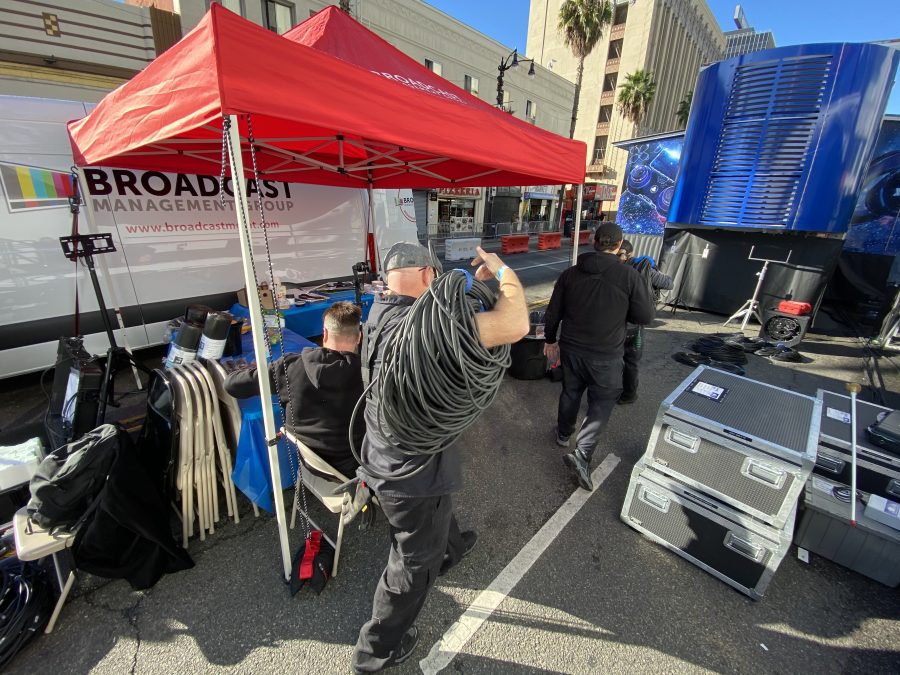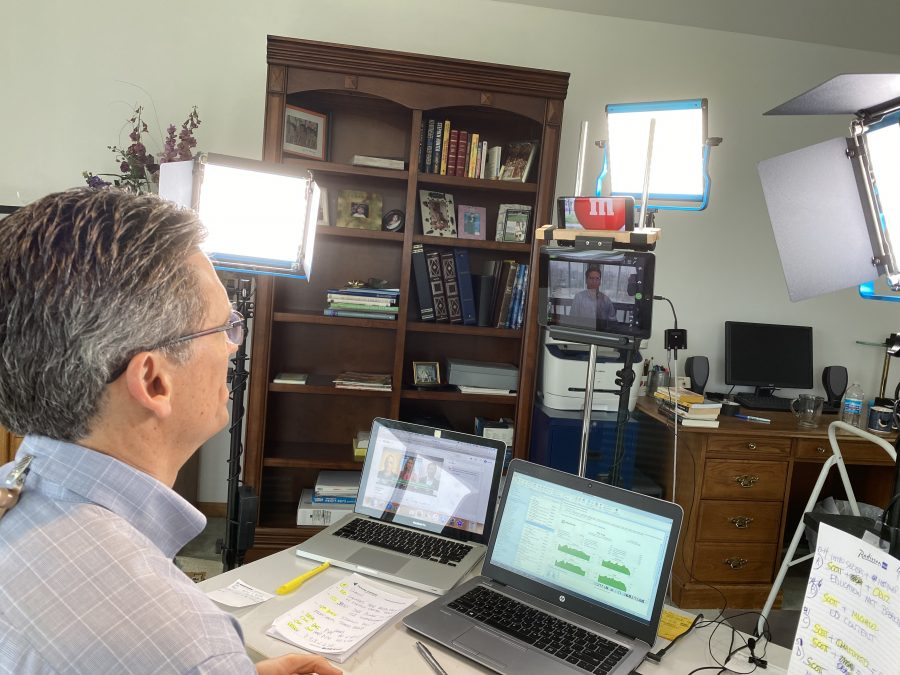REMI – short for Remote Integration Model – is a production workflow that allows live content to be captured from a remote location and managed from a central control room. REMI production workflows have been utilized for years, but have seen a recent surge in popularity.
While REMI workflows may be a new concept for some content creators, they can come with specific advantages.
Let’s dig into the top 5 benefits of REMI production.
1. REMI productions can be more cost-effective

A primary benefit of REMI productions is that they can be more cost-effective than traditional OB productions.
With any REMI production, video and audio must be captured locally. This means that regardless of the content you’re producing, you’ll need a mechanism for capturing high-quality video and audio at a source location. For a sports production, this means having broadcast cameras and audio infrastructure at a local stadium. With live news or entertainment productions, this might entail shipping camera kits to talent and guests.
Each video and audio signal is then transmitted to a central control room where the program is switched, mixed, and broadcast.
Regardless of the content, a remote workflow can provide cost savings in two ways:
- By reducing the amount of technical staff on-location (thus cutting down on travel expenses)
- By lessening the amount of technological infrastructure that’s required on-location
REMI productions allow you to streamline your technical approach and take advantage of existing infrastructures. This allows for reduced technical facilities on-site and slightly lower headcounts, which can lower your overall production budget.
While a lower headcount and infrastructure may shrink your production budget, it’s important to note that REMI productions require robust transmission capabilities. If this isn’t already available at your venue, this may add costs.
2. Leverage existing infrastructure

REMI productions can benefit organizations with existing production infrastructure.
Let’s use ESPN as a hypothetical example. They have many control rooms at their campus in Bristol, CT. If ESPN wanted to produce a college basketball game using a REMI workflow, they could easily utilize an existing control room. And that control room could be operated entirely by ESPN staff.
This would allow ESPN to utilize (thus, monetize) an existing technical facility. They’re then able to operate that facility with current ESPN staff, which saves on production labor.
This hypothetical example would allow ESPN to scale back on the local infrastructure needed to support the game. And, by using existing staff, it would allow them to reduce the number of contractors required to execute the production.
Of course, this is a very basic and broad example. ESPN would need to invest in adequate transmission infrastructure to ensure they have a reliable REMI solution. But this helps to illustrate how existing infrastructure can be leveraged to support a REMI workflow.
3. Reduced travel expenses
The consolidated nature of a REMI production provides additional cost-saving benefits.
By keeping your control room in a central location and condensing the number of people needed on-site, REMI production can significantly reduce travel costs. Airfare, lodging, and per diems are likely to be drastically reduced with a REMI production.
And with many REMI workflows, certain technical functions can be performed remotely. With proper infrastructure, graphics, encoding, directing, and playback are just some of the positions that can be remote.
4. REMI productions have no geographic limitations

A significant benefit to REMI productions is that they have no geographic limitations.
You’re tied to a physical location or venue with an on-location production. This means that your talent and guests all need to report to a central location.
With a REMI production, your hosts, guests, and correspondents can be located anywhere in the world.
There are technical considerations for each remote location, as well as time zone differences to account for. But from a purely technical perspective, REMI productions know no geographic limitations.
Without needing to bring your guests into a single studio location, you can book correspondents from anywhere in the world who can contribute to your program.
5. Easy for talent
One final benefit of REMI productions: they are extremely easy for talent.
With a REMI production, your host and guests no longer have to leave their homes. The technology comes directly to them and they can work from the safety of their own home. It doesn’t get much easier than that.
Not only are REMI productions easier for talent, but the remote nature of REMI workflows allows you to book talent anywhere in the world.
So let’s quickly recap the benefits of REMI production workflows:
- They can, in some cases, be more cost-effective.
- They allow you to leverage existing infrastructure.
- The streamlined nature of a REMI workflow allows for additional cost savings (typically through reduced travel expenses).
- A REMI workflow has no geographic limitations. This applies to talent, producers, and some technical crew.
- Finally, REMI workflows are very easy for your talent.
Many content producers have had REMI productions thrust upon them in our current reality of social distancing. Despite adapting to a new way of producing live content, there are some specific long-term benefits to REMI productions.
If you have a question about REMI production or are looking for support for an upcoming live remote, contact us anytime.














Leave a Reply